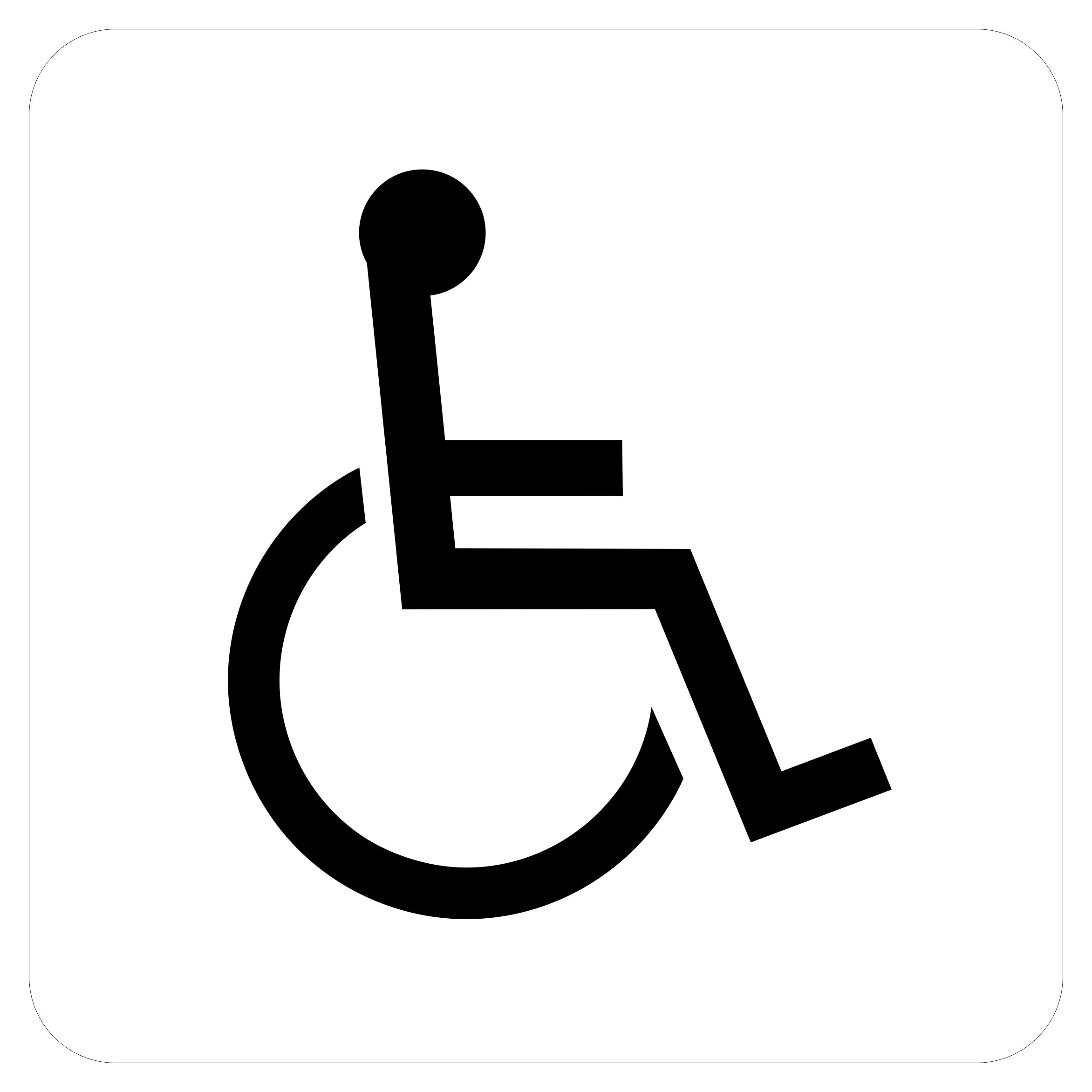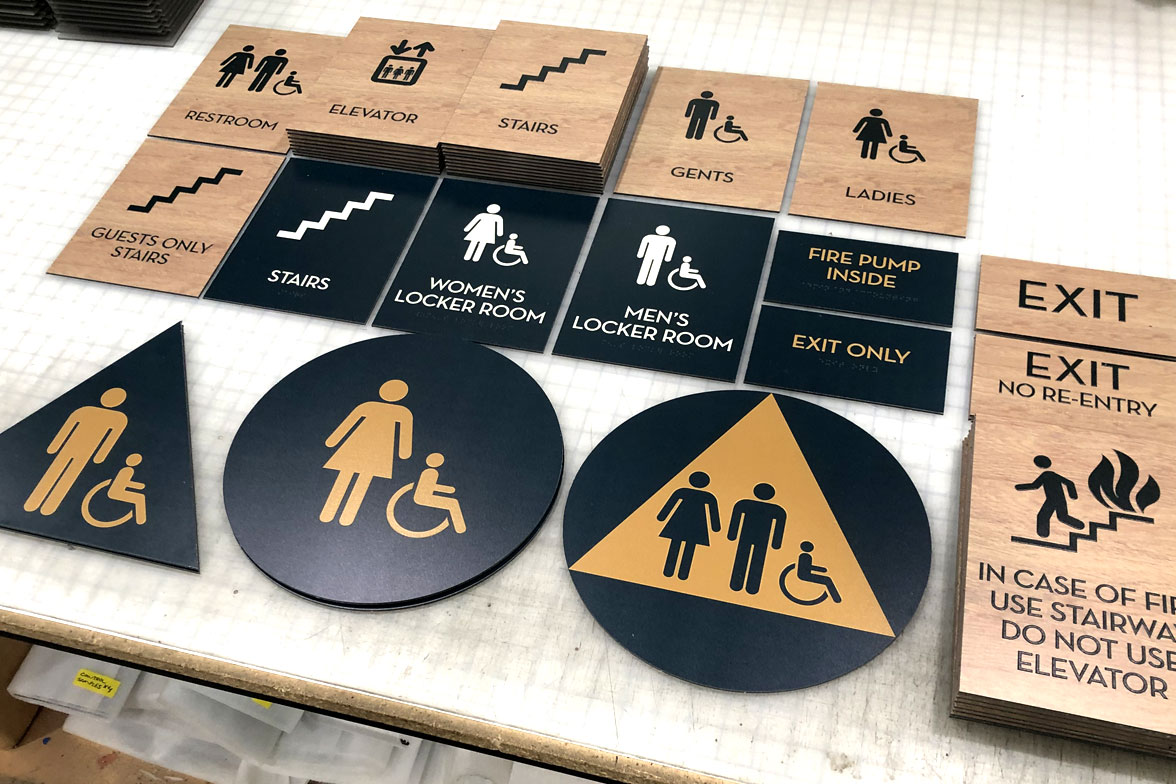ADA Signs: Vital Tools for Inclusive Atmospheres
ADA Signs: Vital Tools for Inclusive Atmospheres
Blog Article
Discovering the Key Features of ADA Signs for Enhanced Ease Of Access
In the realm of access, ADA indications offer as silent yet effective allies, ensuring that areas are comprehensive and accessible for individuals with handicaps. By integrating Braille and responsive elements, these indications damage barriers for the aesthetically damaged, while high-contrast color systems and readable fonts provide to varied visual demands.
Value of ADA Compliance
Making sure compliance with the Americans with Disabilities Act (ADA) is important for fostering inclusivity and equivalent access in public rooms and work environments. The ADA, enacted in 1990, mandates that all public centers, employers, and transport solutions accommodate people with handicaps, guaranteeing they take pleasure in the same civil liberties and opportunities as others. Compliance with ADA standards not only meets legal commitments but additionally boosts an organization's track record by showing its dedication to variety and inclusivity.
One of the essential facets of ADA conformity is the implementation of available signage. ADA indications are made to ensure that individuals with specials needs can conveniently browse through spaces and structures. These indicators need to adhere to specific guidelines regarding size, typeface, shade contrast, and positioning to guarantee exposure and readability for all. Appropriately executed ADA signage helps eliminate obstacles that individuals with specials needs often encounter, thereby advertising their independence and confidence (ADA Signs).
Furthermore, adhering to ADA laws can mitigate the threat of possible fines and lawful effects. Organizations that fail to abide by ADA guidelines might deal with legal actions or charges, which can be both economically difficult and harmful to their public photo. Therefore, ADA compliance is indispensable to promoting an equitable setting for everybody.
Braille and Tactile Elements
The incorporation of Braille and responsive elements into ADA signage symbolizes the principles of accessibility and inclusivity. It is usually put under the equivalent text on signs to ensure that individuals can access the information without visual aid.
Responsive aspects prolong beyond Braille and include increased characters and symbols. These elements are made to be noticeable by touch, enabling individuals to identify room numbers, toilets, exits, and various other essential locations. The ADA establishes specific guidelines relating to the size, spacing, and positioning of these responsive elements to enhance readability and make sure uniformity throughout various atmospheres.

High-Contrast Color Design
High-contrast color pattern play an essential role in boosting the exposure and readability of ADA signage for individuals with aesthetic disabilities. These schemes are crucial as they maximize the distinction in light reflectance in between text and history, guaranteeing that indicators are quickly noticeable, even from a range. The Americans with Disabilities Act (ADA) mandates using specific color contrasts to suit those with limited vision, making it an important aspect of compliance.
The efficiency of high-contrast colors exists in their capacity to stick out in various illumination problems, including dimly lit atmospheres and locations with glare. Generally, dark message on a light history or light message on a dark history is employed to accomplish optimum contrast. Black text on a white or yellow history gives a stark aesthetic distinction that aids in quick acknowledgment and understanding.

Legible Fonts and Text Size
When taking into consideration the layout of ADA signage, the selection of clear typefaces and appropriate message dimension can not be overstated. The Americans with Disabilities Act (ADA) mandates that font styles should be sans-serif and not italic, oblique, manuscript, very ornamental, or of unusual form.
According to ADA guidelines, the minimum text elevation must be 5/8 inch, and it ought to increase proportionally with watching distance. Uniformity in text dimension contributes to a natural visual experience, aiding people in navigating settings efficiently.
In addition, spacing in between letters and lines is indispensable to legibility. Ample spacing protects against characters from showing up crowded, improving readability. By adhering to these standards, developers can substantially improve access, making sure that signage offers its designated purpose for all people, no matter their aesthetic capacities.
Effective Positioning Methods
Strategic placement of ADA signs is important for taking full advantage of availability and ensuring compliance with lawful standards. Effectively positioned signs guide individuals with impairments effectively, facilitating navigation in public spaces. Secret considerations consist of presence, proximity, and height. ADA guidelines state that indications need to be mounted at a height between 48 to 60 inches from the ground to ensure they are within the line of sight for both standing and seated individuals. This basic height variety is essential for inclusivity, allowing mobility device customers and individuals of varying heights to gain access to info effortlessly.
Additionally, indicators must be put nearby to the lock side of doors to permit simple recognition before access. Consistency in indicator placement throughout a center improves predictability, reducing confusion and boosting general customer experience.

Verdict
ADA indications play a vital function in advertising access by incorporating functions that address the needs of people with disabilities. Integrating website here Braille and tactile components guarantees crucial information is accessible to the aesthetically damaged, while high-contrast color plans and clear sans-serif fonts enhance visibility across numerous illumination conditions. Efficient placement techniques, such as suitable mounting heights and strategic locations, additionally facilitate navigating. These components collectively cultivate a comprehensive setting, highlighting the value of ADA compliance in ensuring equal access for all.
In the world of access, ADA indicators offer as silent yet powerful allies, guaranteeing that areas are navigable and inclusive for people with disabilities. The ADA, enacted in 1990, mandates that all public centers, companies, and transport services fit individuals with impairments, ensuring they take pleasure in the exact same rights and opportunities as others. ADA Signs. ADA signs are designed to ensure that people with handicaps can conveniently browse via structures and spaces. ADA guidelines specify that indications should be placed at a height in between 48 to 60 inches from the ground to ensure they are within the line of sight for both standing and seated people.ADA indications play an important duty in advertising ease of access by integrating features that deal with the requirements of people with disabilities
Report this page